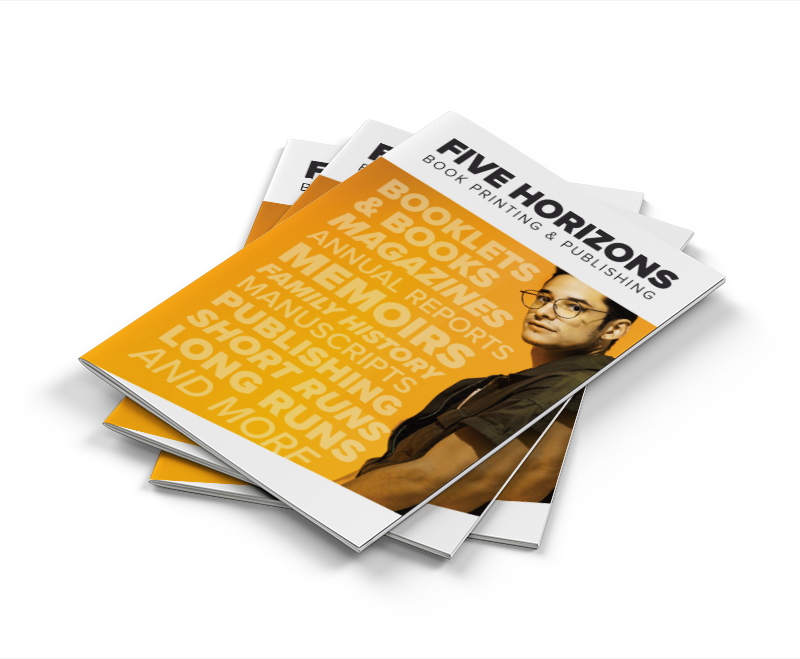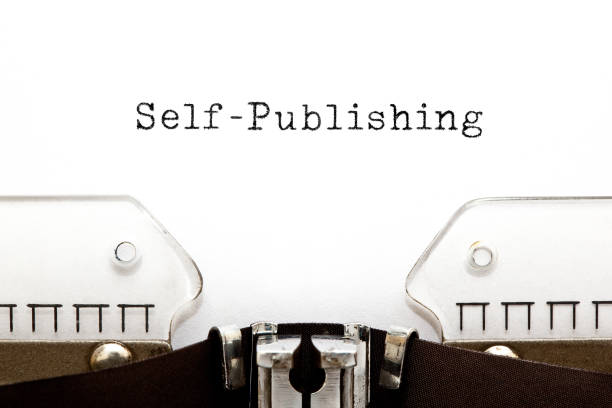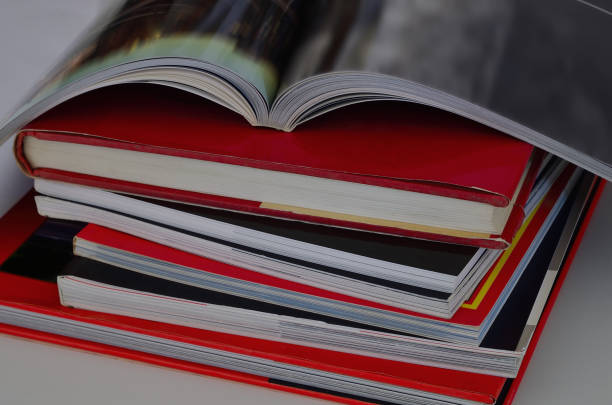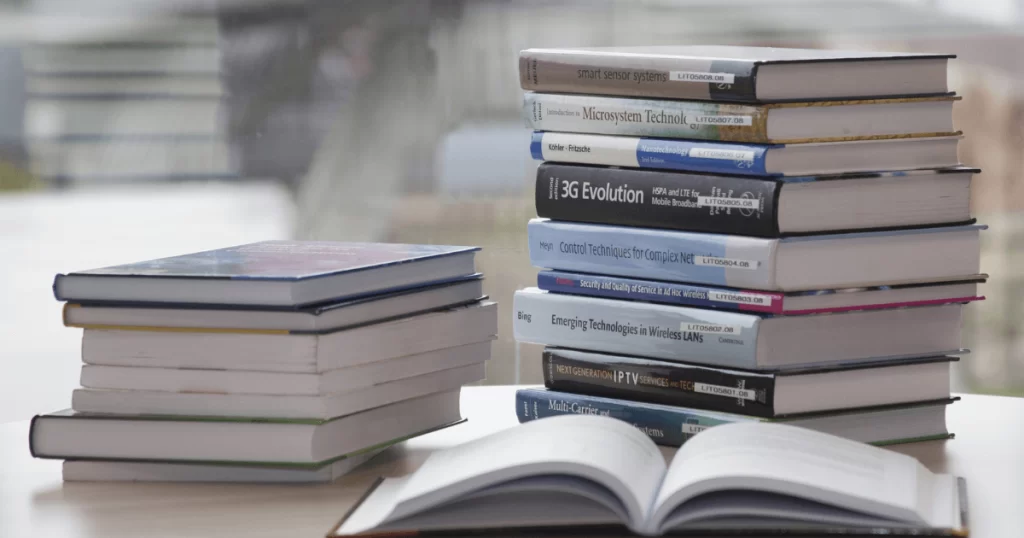






Welcome to our comprehensive guide on self-publish book printing. If you’re an aspiring author, understanding paper choices and binding options is crucial to ensure the success of your self-published book. These choices can significantly impact the overall outcome and expense of your book, so it’s important to make informed decisions. In this article, we will provide insights into the different steps and considerations involved in the self-publish book printing process. So, let’s dive in and explore the world of self-publishing!
Section 2 of this article focuses on the initial stages of self-publishing, starting with perfecting the manuscript for print. It highlights the importance of developmental editing in improving the structure, content, and style of the book. Additionally, it emphasizes the significance of book design, including captivating covers and visually appealing interior layouts, in attracting readers and enhancing the reading experience.
One of the first steps in the self-publishing journey is ensuring that your manuscript is ready for print. This involves reviewing and refining the content, checking for grammatical errors, and ensuring consistency in style and formatting. By perfecting your manuscript, you lay the foundation for a polished and professional final product. This holds true for print as well as it does for kindle direct publishing.
Developmental editing plays a crucial role in shaping your published book printing into a compelling product. It involves working closely with a professional editor who provides feedback and guidance on areas such as plot development, character arcs, pacing, and overall structure. Through developmental editing, you can refine your story, enhance its impact, and create a cohesive reading experience for your audience.
Book design goes beyond aesthetics; it plays a vital role in engaging readers and drawing them into your book. A captivating cover design is often the first impression readers have of your book, and it can greatly impact its success. Interior layouts, including fonts, chapter headings, and spacing, contribute to readability and enhance the overall reading experience. Investing in professional book design ensures that your self-published book stands out both visually and in terms of quality.

In order to successfully self-publish a book, it is important to understand the book printing process. This section will provide you with an overview of the key steps involved, from formatting your book files to the final production of high-quality printed books.
Step 1: Formatting the Book Files
Before proceeding with the printing process, it is crucial to properly format your book files. This includes ensuring that the text is aligned and formatted correctly, and that any images or illustrations are of high quality. Pay attention to the file format and resolution requirements specified by the printing service you choose.
Step 2: Choosing a Printing Service
Once your book files are ready, the next step is to choose a suitable printing service. Take into consideration factors such as printing quality, turnaround time, pricing, and additional services offered. Research different printing companies and read customer reviews to make an informed decision.
Step 3: Submitting the Files for Printing
After selecting a printing service, you will need to submit your formatted book files for printing. This usually involves uploading the files to the printing service’s online platform or sending them via email. Ensure that you follow the printing service’s specific instructions for file submission to avoid any delays or issues.
Step 4: Proofing the Final Copy
Before the production of your printed books begins, it is vital to thoroughly proofread the final copy. This includes checking for any spelling or grammatical errors, as well as verifying the formatting and layout. Proofing ensures that your book will be printed exactly as intended, without any mistakes or inconsistencies.
Step 5: Printing and Production
Once the final copy has been approved, the printing service will proceed with the production of your books. This typically involves printing the pages, binding them together, and adding any additional elements like book covers or dust jackets. The printing service plays a crucial role in delivering high-quality printed books that meet your specifications.
| Step | Description |
|---|---|
| Step 1 | Formatting the Book Files |
| Step 2 | Choosing a Printing Service |
| Step 3 | Submitting the Files for Printing |
| Step 4 | Proofing the Final Copy |
| Step 5 | Printing and Production |
By following these steps, you can navigate the self-publish book printing process with confidence and ensure that your final product meets your expectations. Remember to carefully review each step and work closely with your chosen printing service to create a high-quality, professionally printed book.
When self-publishing a book, selecting the right paper is a crucial decision that can greatly impact the final product. Several factors must be considered, including the choice between black-and-white and colour printing, the decision between white and cream paper, and the importance of paper weight and finish for book durability. By carefully considering these elements, authors can ensure that their self-published books have the desired aesthetic appeal and durability.
One of the first considerations when choosing paper for a self-published book is whether to opt for black-and-white or colour printing. Black-and-white printing is cost-effective and suitable for books with primarily text-based content. On the other hand, colour printing can enhance visual appeal and is recommended for books with images, illustrations, or vibrant visual elements. Authors need to assess their budget, content requirements, and target audience preferences to make an informed decision.
The choice between white and cream paper for a self-published book depends on the desired aesthetic and the content being presented. White paper offers a clean and modern look, making it a versatile choice for various genres and themes. Cream paper, on the other hand, can provide a more classic and vintage feel, often preferred for historical or nostalgic narratives. Authors should consider the tone, genre, and visual tone of their book to determine which option best complements their content.
Another crucial aspect of selecting the right paper for a self-published book is considering the weight and finish. Paper weight affects the overall feel, thickness, and durability of the book. Thicker paper with a higher weight is sturdier and less prone to tearing or damage, providing a professional and long-lasting product. Additionally, the paper finish, such as matte or glossy, can impact the visual appearance and texture of the book. Authors should choose a paper weight and finish that align with their desired book durability and aesthetic vision. Children’s Books, for example, will differ from photo books. It depends on the application.

When it comes to self-published books, choosing the right binding option is crucial for both the appearance and functionality of the final product. This section will compare different binding techniques, with a focus on perfect binding and other alternatives.
Perfect binding is a popular option for self-published authors due to its cost-effectiveness and professional look. In this technique, the pages of the book are glued together at the spine, creating a clean and neat finish. Perfect binding is suitable for books with larger page counts and offers durability, making it ideal for novels, textbooks, and manuals.
However, there are other binding techniques worth considering depending on the nature of your book. Spiral binding, for example, is commonly used for notebooks, calendars, and cookbooks. It allows the book to lay flat when opened, providing practicality for reference materials or books that require easy page flipping.
Hardcover binding, on the other hand, provides a more premium and sturdy feel. It is a popular choice for high-end publications such as coffee table books, art books, and limited-edition editions. Hardcover binding not only offers durability but also adds a touch of elegance and sophistication to your book.
To better understand the differences between these binding options, refer to the table below:
| Binding Technique | Advantages | Suitable for |
|---|---|---|
| Perfect Binding | Cost-effective, professional appearance, suitable for larger page counts | Novels, textbooks, manuals |
| Spiral Binding | Lays flat, practical for reference materials, easy page flipping | Notebooks, calendars, cookbooks |
| Hardcover Binding | Premium feel, durability, adds elegance | Coffee table books, art books, limited editions |
Consider the nature of your book, your target audience, and your budget when deciding on the binding option that best suits your needs. Each technique offers unique benefits and is suitable for different types of publications. By carefully evaluating your options, you can ensure that your self-published book is bound with the perfect technique to enhance its overall presentation and reader experience.
When it comes to self-publish book printing, striking a balance between print quality and costs is crucial for independent authors. By implementing efficient printing strategies and exploring the right options, authors can achieve high print quality without breaking the bank. This section will discuss three key factors that contribute to maximising print quality while minimising costs:
Offset printing is a cost-effective solution for authors planning large print runs. This printing technique involves transferring ink from a plate to a rubber blanket and then onto the paper, resulting in sharp, high-quality prints. The economic advantage of offset printing lies in its ability to handle large volumes efficiently, reducing the cost per unit. By opting for offset printing for their self-published books, authors can benefit from significant cost savings without compromising on print quality.
Print-on-demand (POD) is another option that can help independent authors maintain print quality while minimising costs. With POD, books are printed in small quantities or even a single copy as per demand, eliminating the need for high upfront costs and large print runs. This flexibility allows authors to save on inventory costs and ensures that each book is freshly printed, maintaining optimal print quality. Additionally, POD allows authors to make timely updates or revisions to their books, enabling them to stay current and relevant in a rapidly changing publishing landscape.

For authors planning large print runs, implementing efficient printing strategies can help maximise print quality while managing costs. Here are a few tips:
Implementing these strategies can help independent authors achieve high print quality while optimising costs, making their self-published books visually captivating and cost-effective.
In the world of self-publish book printing, one important decision to make is whether to choose a hardcover or softcover format for your book. Each option has its own advantages and considerations, and understanding the differences can help you determine which option suits your book best.
Durability: Hardcover books are known for their sturdiness and ability to withstand wear and tear. They are ideal for books that are meant to be long-lasting or passed down through generations. On the other hand, softcover books are lighter and more flexible, making them easier to carry and store.
Cost: Hardcover books are generally more expensive to produce due to the higher cost of materials and production processes. Softcover books, on the other hand, are more cost-effective, making them a popular choice for authors with budget constraints or those planning to print a larger number of copies.
Reader Preferences: Reader preferences can also play a role in choosing between hardcover and softcover books. Some readers may prefer the tactile feel and weight of a hardcover book, while others may find softcover books more comfortable to hold and read.
Ultimately, the decision between hardcover and softcover books should be based on the nature of your book, the genre, and your target audience. It’s important to align the format with the content to create the best reading experience for your readers.
When it comes to selecting a self-publish book printing company, there are several important criteria to consider. By carefully evaluating these factors, you can ensure that you choose a reputable and reliable printing service that meets your specific requirements.
One of the key factors to consider when selecting a self-publish book printing company is their reputation within the industry. Look for companies that have a proven track record of delivering high-quality printed books and providing excellent customer service.
Customer reviews and testimonials can provide valuable insights into the experiences of other self published authors who have used the printing company’s services prior, and teste the self-publishing industry. Take the time to read these reviews and consider the overall satisfaction level of customers before making your decision.
Choosing a printing company with efficient turnaround times is crucial, especially if you have a specific deadline or launch date in mind for your book. Look for companies that can deliver printed books in a timely manner without compromising on quality. Many book printing companies quote short turnarounds on Perfect Bound (PUR) books. These books need to cure properly (48 hours minimum) When lookig for high quality printing, its important to look for high quality finishing as well.
Additionally, consider the distribution services offered by the printing company. Some companies may offer fulfillment and distribution services, which can save you time and effort in managing the logistics of shipping and delivering your books to customers.
Customisation options play a significant role in creating a unique and visually appealing final product. Consider the different customisation options offered by each printing company, such as cover finishes, foil stamping, embossing, and special binding techniques. Select a company that can provide the level of customisation you desire for your book. Online Self Publishing companies, as a general rule, have more options than local, smaller suppliers.
Lastly, don’t overlook the importance of the proofing process. Look for a printing company that has a thorough and efficient proofing process in place to ensure that your book is error-free and meets your expectations. This step is crucial for avoiding printing errors and producing a professional final product.

In the world of self-publishing, it’s crucial to have a comprehensive understanding of the specific details and technical aspects of book printing. This section aims to provide valuable insights into the intricacies of self-publish book printing, equipping authors with the knowledge they need to ensure a successful printing process.
One of the key considerations when preparing your book for printing is file formats. It’s important to select the appropriate file format that is compatible with the printing service you choose. Common file formats include PDF (Portable Document Format) and EPUB (Electronic Publication). Understanding the requirements and specifications of each format will help ensure that your book file is correctly processed and printed.
Print specifications also play a vital role in achieving the desired outcome for your self-published book. These specifications include factors such as page size, margin settings, font choices, and image resolutions. By adhering to the recommended print specifications, you can optimize the visual aesthetics and readability of your book.
Another area to consider is the print-on-demand (POD) option, which allows for efficient and cost-effective printing. With POD, books are only printed when an order is received, eliminating the need for large upfront print runs. This approach not only reduces storage costs but also provides flexibility for authors to make updates or revisions to their books as needed.
Furthermore, it’s essential to be mindful of color management when self-publishing books that contain color images or illustrations. Ensuring proper color calibration and understanding the color profile requirements of your chosen printing service will help maintain the integrity and vibrancy of your book’s visuals.
Lastly, typography is an often-overlooked aspect of book printing, but it plays a significant role in the overall reading experience. Carefully choosing fonts that are legible and appropriate for your genre will enhance the readability and professionalism of your book.
By taking the time to understand these specifics of self-publish book printing, authors can navigate the printing process with confidence and create a high-quality finished product that satisfies both their artistic vision and their readers’ expectations.
In conclusion, understanding paper choices and binding options is crucial for self-published authors embarking on their book printing journey. Throughout this article, we have explored the various considerations involved in self-publish book printing, from perfecting the manuscript to selecting the right paper and binding techniques.
By understanding the impact of choices like black-and-white versus color printing, white versus cream paper, and perfect binding versus alternative techniques, authors can make informed decisions that align with their content, target audience, and budget. Furthermore, we have discussed strategies to maximize print quality while minimizing costs, such as offset printing and print-on-demand services.
When selecting a self-publish book printing company, it is important to assess factors like reputation, customer reviews, turnaround times, distribution services, customizability, and proofing processes. These criteria ensure a reliable and high-quality production process, resulting in a professional and error-free final product.
We hope that the insights and information provided in this article will empower self-published authors to create beautiful and successful books. By applying this knowledge, authors can navigate the self-publishing journey with confidence, achieving their goals and connecting with readers on a meaningful level.
When choosing paper for a self-published book, it’s important to consider factors such as the choice between black-and-white and colour printing, the decision between white and cream paper, and the weight and finish of the paper for durability and aesthetics.
Self-published authors have various binding options to choose from, including perfect binding, spiral binding, and hardcover binding. Each option offers unique benefits and should be selected based on factors such as cost, appearance, and suitability for the book’s content and target audience.
Self-published authors can achieve high print quality while managing costs by considering options such as offset printing for large print runs and print-on-demand for smaller quantities. Other strategies include optimizing printing efficiency and selecting the appropriate paper and binding options based on the book’s genre and target audience.
Hardcover books offer durability and a premium look, while softcover books are more cost-effective and flexible. Authors should consider factors such as the genre, target audience, and budget when choosing between hardcover and softcover formats.
When selecting a self-publish book printing company, authors should consider the company’s reputation, customer reviews, turnaround times, distribution services, customisation options, and proofing processes. These factors will help ensure the reliability, quality, and timely delivery of the printed books.
Authors should be aware of technical requirements such as file formats, print specifications, and file submission processes when engaging in self-publish book printing. Understanding these details will help authors navigate the printing process smoothly and produce high-quality printed books.
Copyright © 2025 Five Horizons. All Rights Reserved.